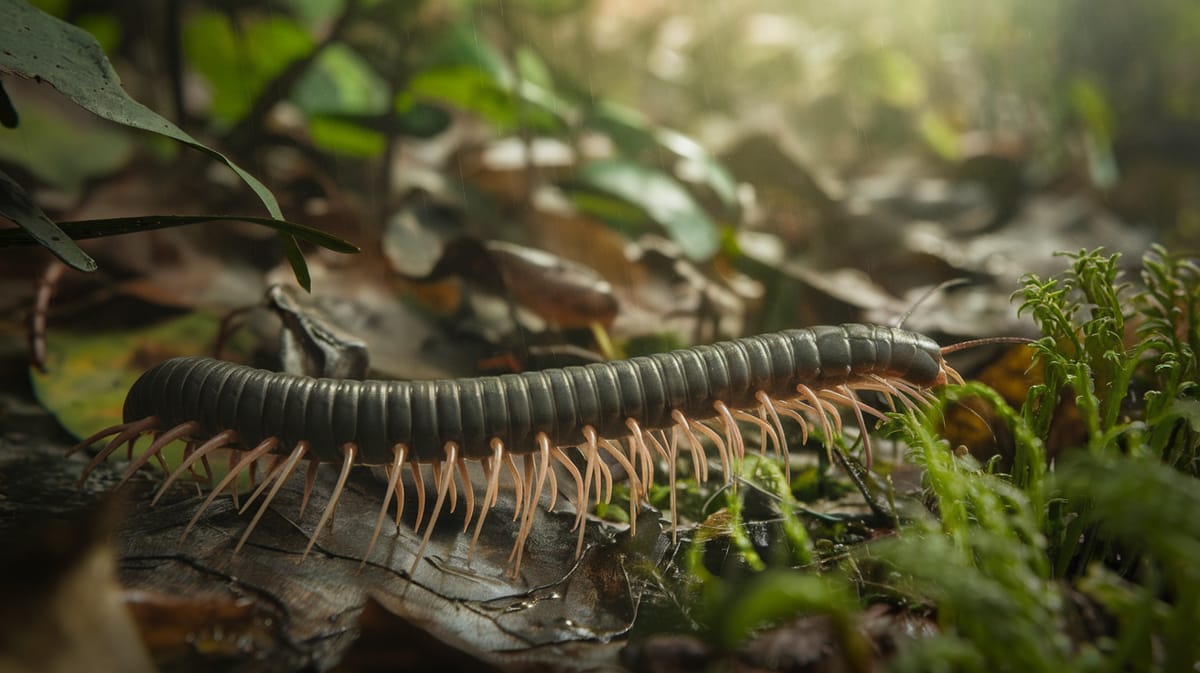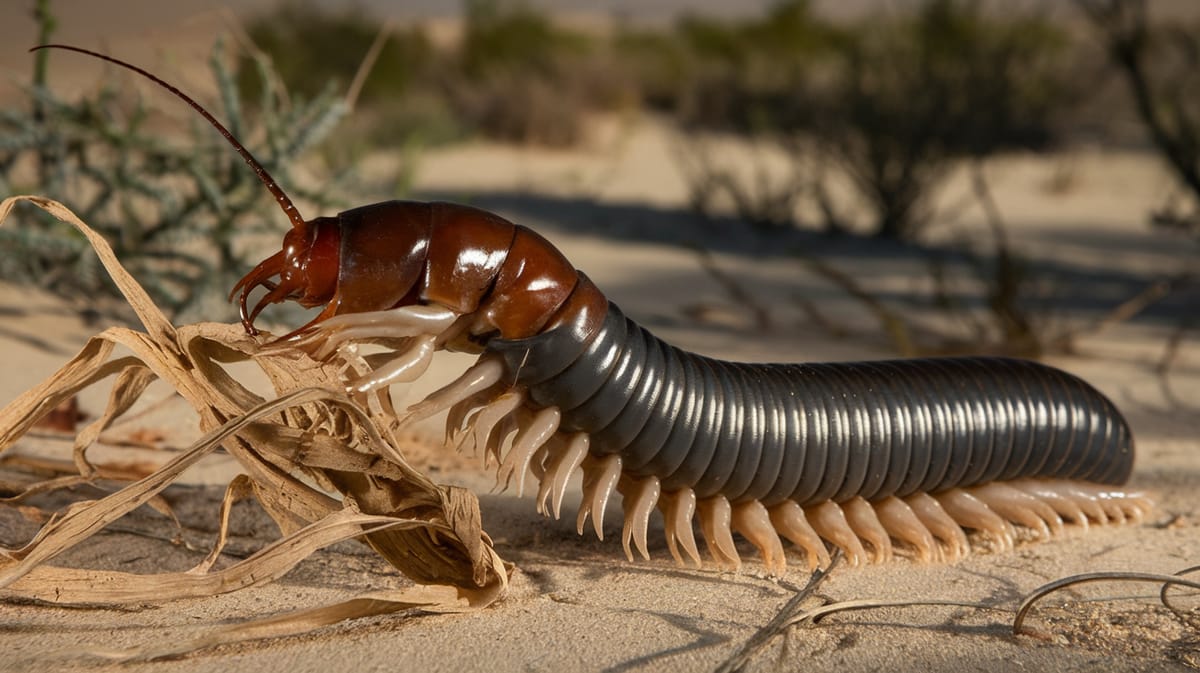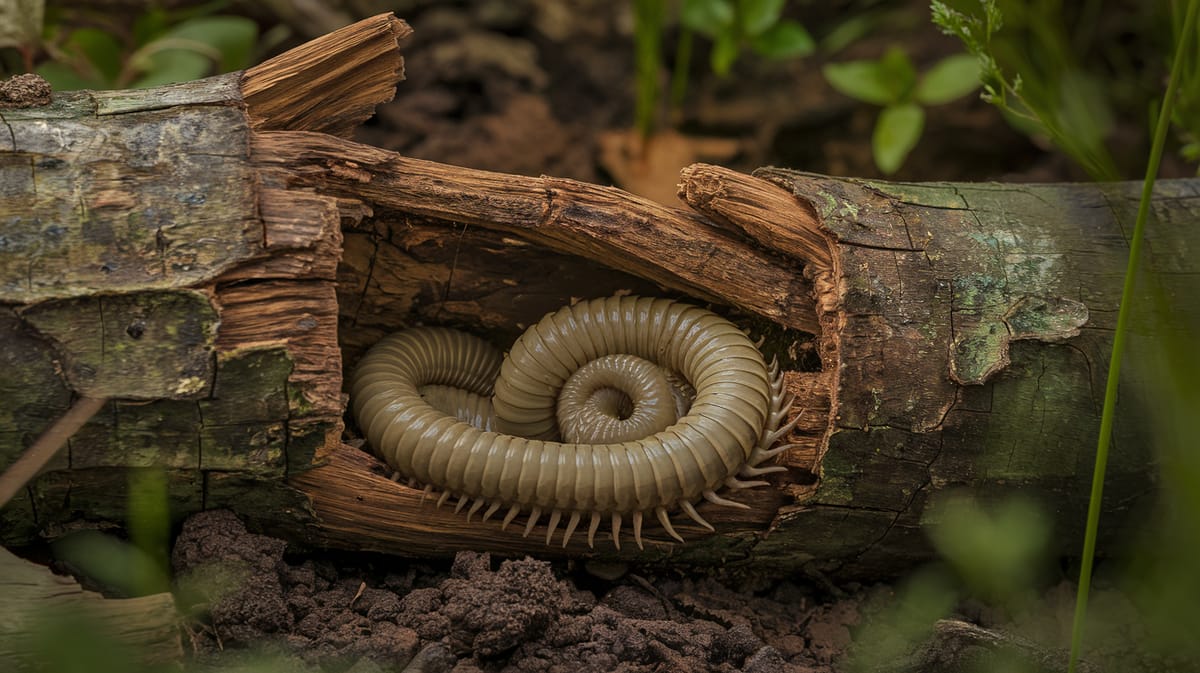Millipede
With their countless legs and gentle nature, millipedes gracefully recycle organic matter, enriching the soil. These nocturnal creatures play a vital role in decomposing leaf litter.

Key Insights at a Glance
Did You Know?
Taxonomy & Classification
Millipedes, with their elongated bodies and dual-segmented legs, are adept decomposers, playing a crucial role in breaking down organic matter. Let's understand the evolutionary journey and classification of these remarkable decomposers.
Species Diversity
Millipedes boast over 12,000 species across various genera, thriving in diverse habitats worldwide, from forests to deserts.
Ancient Origins
Dating back over 400 million years, millipedes have adapted to survive major extinction events, showcasing remarkable evolutionary resilience.
Lifecycle and Growth
A remarkable journey of transformation from Egg to Adult.
Egg
Eggs are laid in soil, protected by a hardened shell that guards against environmental threats. Development begins inside these secure capsules.
Juvenile
Juveniles emerge resembling small adults with fewer body segments, acquiring more segments and legs through successive molts.
Adult
Adults are fully segmented and continue to molt, but less frequently, focusing on reproduction and nutrient-rich feeding.
Dietary Habits
A decomposer with effective scavenging techniques, it thrives on decaying plant matter and occasionally feasts on fungi and organic debris.
| DIET TYPE | DESCRIPTION |
|---|---|
| Primary Diet | Consumes mostly decaying leaves, wood, and other plant debris, playing a vital role in nutrient cycling. |
| Secondary Diet | Occasionally feeds on fungi, enhancing its diet with additional nutrients found in these organic sources. |
| Occasional | Rarely consumes small insects or animal remains, offering flexibility during resource-scarce conditions. |

Behaviour and Adaptations
Discover the fascinating adaptations that enable the Millipede to thrive in diverse environments.
Defensive Secretion
Emits toxic chemicals to deter predators and protect itself.
Burrowing Ability
Efficiently digs into the soil to find shelter and moisture.
Segmented Movement
Hundreds of legs work together for smooth, coordinated motion.
Ecosystem Impact
Millipedes play a crucial role in maintaining ecological balance by aiding decomposition and nutrient cycling.
Decomposer Extraordinaire
Breaks down organic matter, enriching soil with nutrients.
Soil Aerator
Enhances soil structure by burrowing, promoting air and water movement.
Detritus Recycler
Feeds on decaying plant material, aiding nutrient recycling.
Conservation Challenges
Addressing critical threats to millipede populations and their ecosystems.
Habitat Destruction
Deforestation and urbanization lead to loss of millipede habitats.
Pesticide Exposure
Chemical use in agriculture poisons millipedes and disrupts soil ecosystems.
Climate Change
Altered weather patterns and temperatures affect millipede survival and reproduction.
Frequently Asked Questions
How long do Millipede live?
Millipedes can live for several years, typically ranging from 5 to 10 years depending on the species and environmental conditions. Some species have been known to live even longer in captivity with proper care and optimal habitat conditions.
What do Millipede eat?
Millipedes primarily feed on decaying organic matter such as dead leaves, wood, and other decomposing plant material. They play an important role in breaking down and recycling nutrients in the ecosystem. Occasionally, they may also consume fresh plant material.
Are Millipede poisonous?
Millipedes are not poisonous and do not pose any serious threat to humans. They do not bite, but some species can secrete a defensive liquid that may cause mild skin irritation if handled. This secretion helps deter predators.
Are Millipede endangered?
Most millipede species are not endangered, but habitat destruction and environmental changes can impact certain populations. Conservation efforts are essential to protect their natural habitats and ensure the survival of various species.
What do Millipede symbolize?
Millipedes often symbolize resilience, patience, and transformation in various cultures. They are seen as creatures that symbolize grounding due to their connection with the earth and their role in breaking down organic matter, enriching the soil.
Do Millipede bite?
Millipedes do not bite. Instead, they defend themselves with secretions that can cause mild skin irritation in some people. Their defensive mechanisms are primarily meant to ward off predators rather than to harm humans.
What color are Millipede?
Millipedes come in various colors, ranging from black and brown to red, orange, and even yellow. Their coloration can vary depending on the species and often serves as a warning to potential predators about their defensive capabilities.
Does a Millipede have wings?
Millipedes do not have wings. They are characterized by their long, segmented bodies and numerous legs, which help them move through soil and leaf litter. Their lack of wings is a key feature distinguishing them from other arthropods.
What does a Millipede look like?
Millipedes have long, cylindrical bodies with many segments, each bearing two pairs of legs. They typically have a rounded head, short antennae, and vary greatly in size and color depending on the species. They are often mistaken for centipedes but have more legs.
Is a Millipede an insect?
No, a millipede is not an insect. Millipedes belong to the class Diplopoda, which is part of the arthropod phylum. Unlike insects, which have three pairs of legs and three body segments, millipedes have multiple body segments with two pairs of legs per segment.
Related Insects
Discover insects with similar characteristics to Millipede - including shared habitats, diets, and taxonomic classifications
Share this profile
Help others discover Millipede
